I wrote a post several years ago about how many canoes I have. Some of you asked me what has changed since then, I wanted to update y’all. A lot of change, as you may imagine.
Because of my profession, I try to be brand-agnostic or at least brand neutral. I believe that the canoes we sell at the shop are the best brands to choose from, otherwise I wouldn’t sell them, lest you think I’m shilling product. I’m not.
Numbers One, Two, and Three: 18′, 16′ and Willow, built by Island Falls Canoe.
I have a 18′ and 16′ Wilderness, and a 15′ Willow Solo. The biggest one paddles like a dream, holds a ton of gear, and is a great workout on a portage. So it doesn’t go on many trips where there are portages, and I don’t upload it (or try not to unload it) by myself.
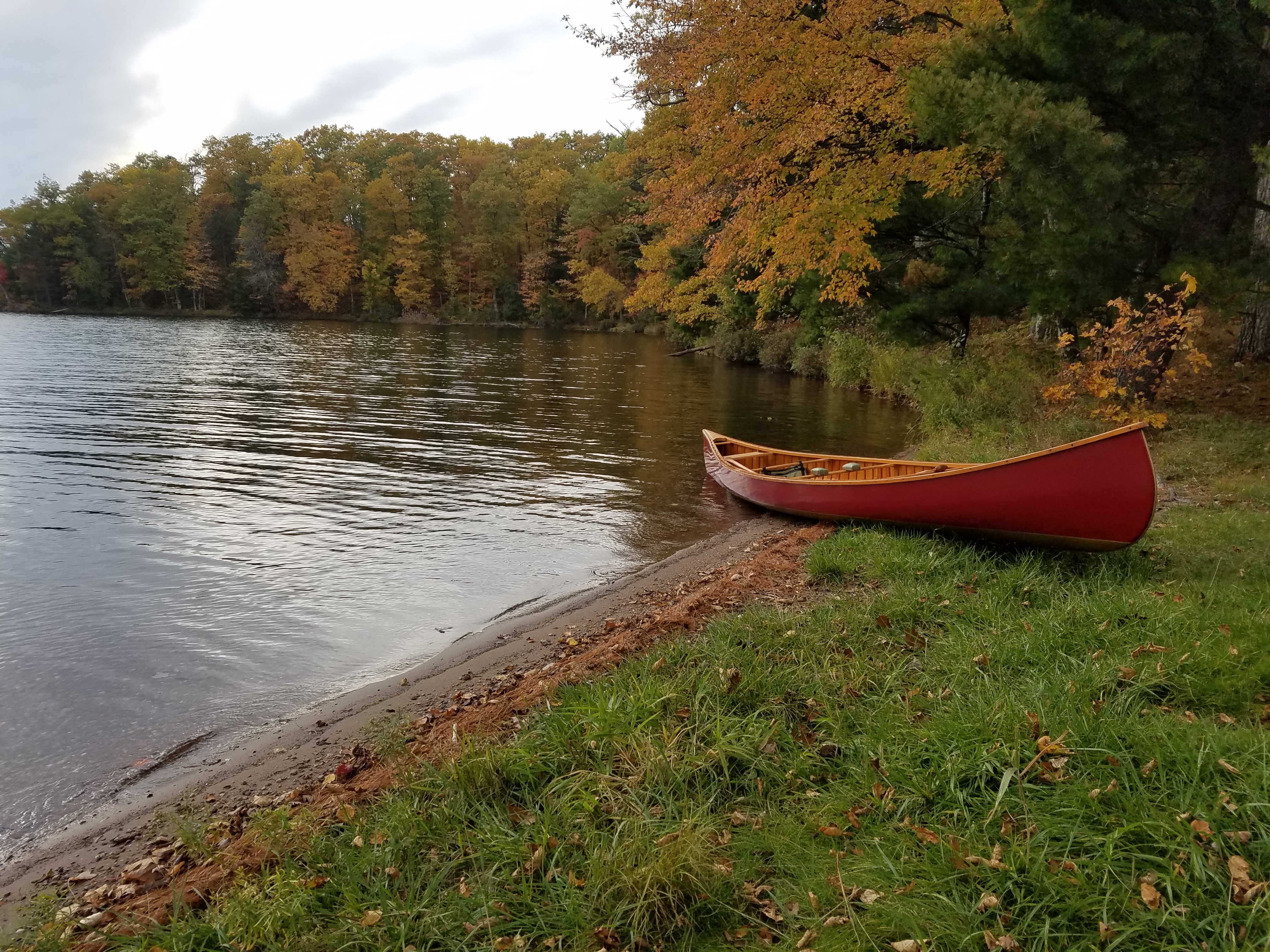
The 16 footer is flatter on the bottom, so it’s a little slower, but it floats over shallow water and is a great boat for poling. I just had it recanvased by my friend Dave Osborn. He is trying to retire but I keep on throwing boats in his direction.
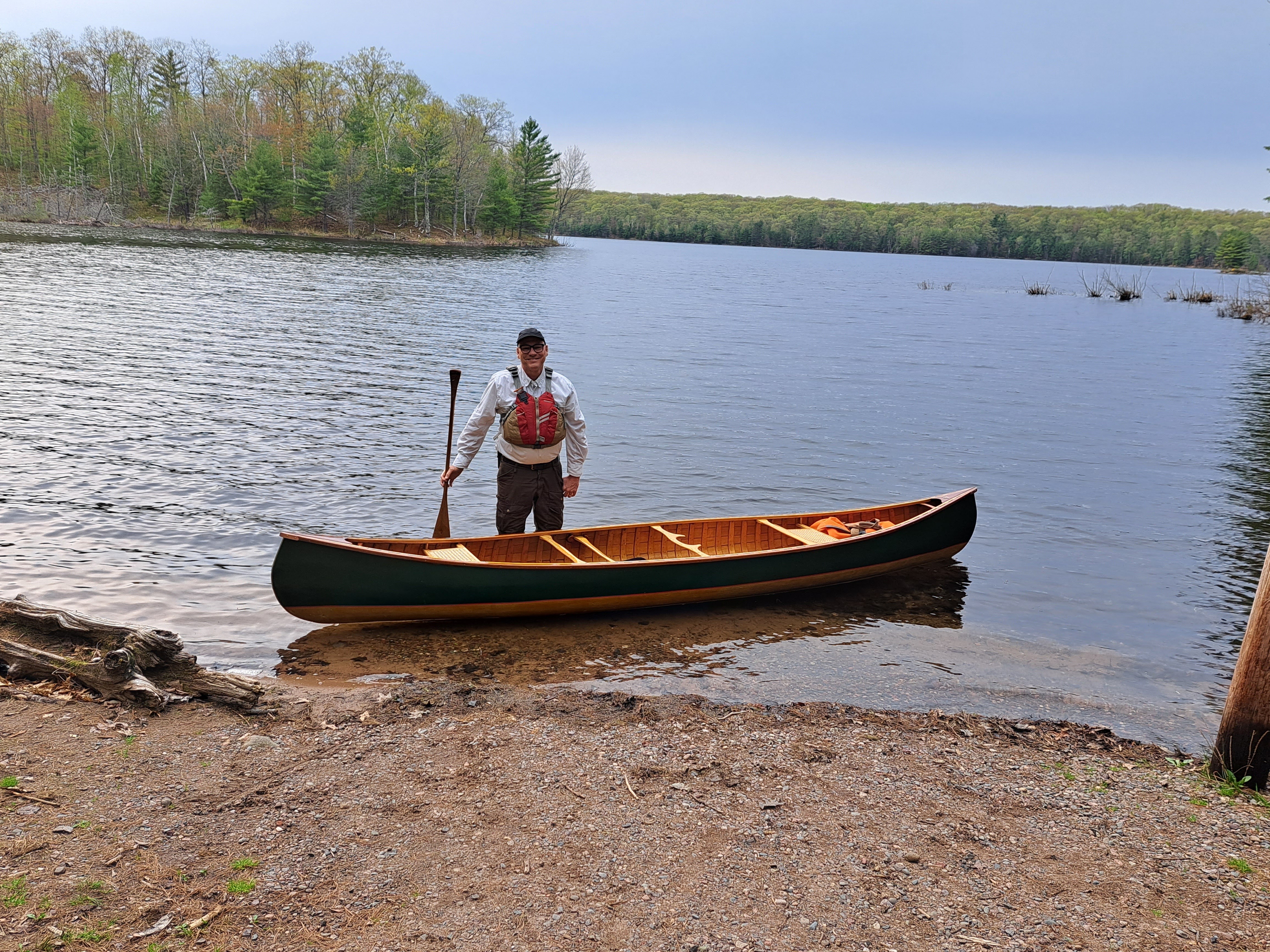
The Willow is one of my favorites. I wrote about it here and here. The second here is an addendum that is worth reading. It is still as efficient as a Prius with a tailwind and still just as cranky, but I swear she paddles herself.
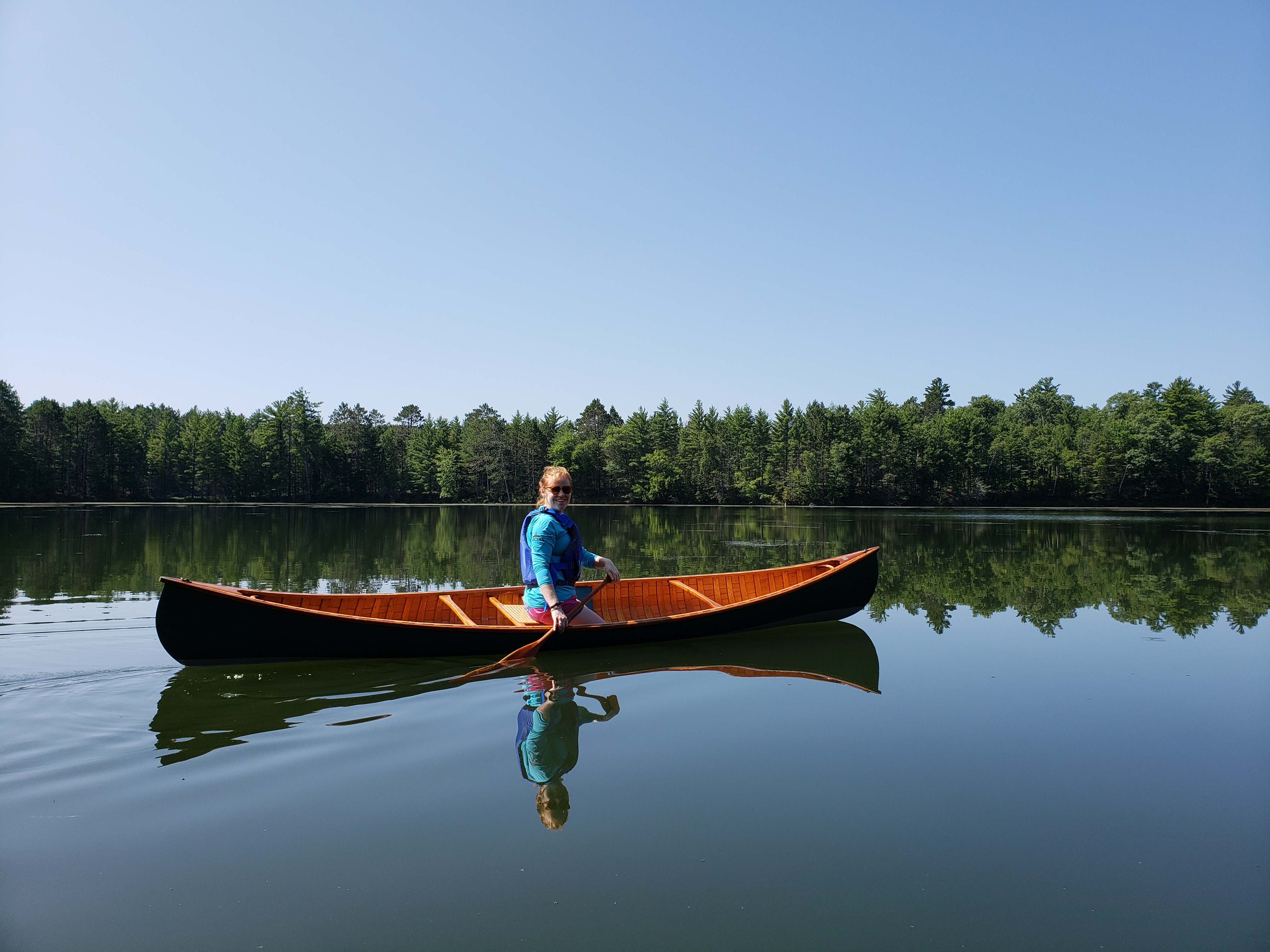
I purchased none of them new. The 18′ wasn’t paddleable until restoration, the 16 had the canvas rotted under the gunwales (barn find), and the Willow had a bunch of cracked ribs from being paddled with less care than is befitting a lady of that stature and grace.
So that’s all for the wood boats. I think. Probably. Do I want another one? Duh. I would love a Rushton Indian Girl or a 17′ B.N. Morris Model A, Type III. But it would be the height of avarice to lust after one.
Number Four : Swift Keewaydin 17
This is my tripper. Fast, light, and neutral, if that means anything. To me it means it has no bad habits, paddles well in a quartering sea (the test of a good canoe, in my opinion), and is pretty. I went all out on the layup and went carbon with integrated carbon gunwales, A 17 footer that weighs just under 40 pounds is great for BWCA trips.
I wrote a review about this (and other 17-footers) for Men’s Journal several years ago. Lots of pictures there.
Number Five: Northstar Phoenix
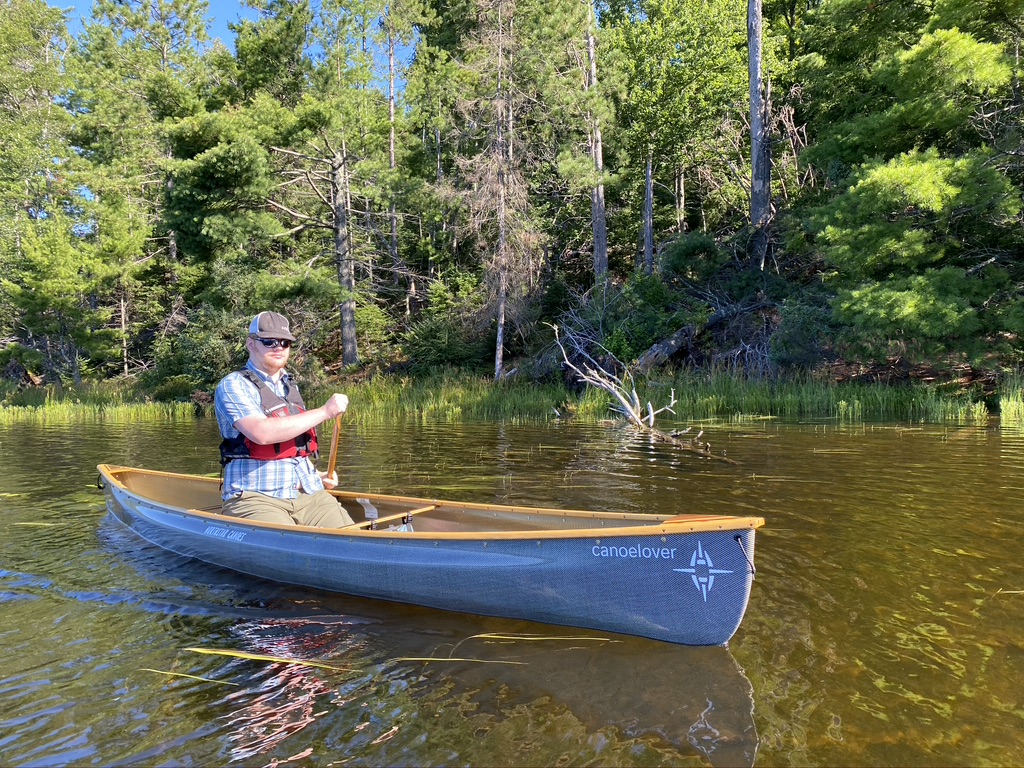
I really like this canoe. She’s pretty in a not-so-sleek sort of aesthetic: a little zaftig if you will. The tumblehome makes it easy to reach the water but she’s still rock-solid stable in an aggressive lean. I don’t paddle long skinny solos; she’s fast enough for me. The construction is Northstar Canoes’ IXP, a cloth woven from basalt fibers and Innegra, an aramid fiber and cousin to Kevlar. She flexes when you hit things, and I use this boat a lot on shallow rivers and up to Class II+. She can take it. If you can only have one boat, especially as a novice solo paddler, she’d be a good choice.
Number Six: Curtis Companion
The first open canoe I ever owned. It’s a solo-tandem that actually does both well, Great to paddle with my babies (all grown up now) and with my old lab Gracie. She’s heavy for a 15-footer, as Curtis overbuilt their boats and hand-laminated them. No matter how many skills you have hand-laminating, it’ll never hit the weight of vacuum-bagged or resin-infused boats. Another Dave Yost design, she’s also a little zaftig.
I had many wonderful experiences in this canoe. Gonna leave it at that.
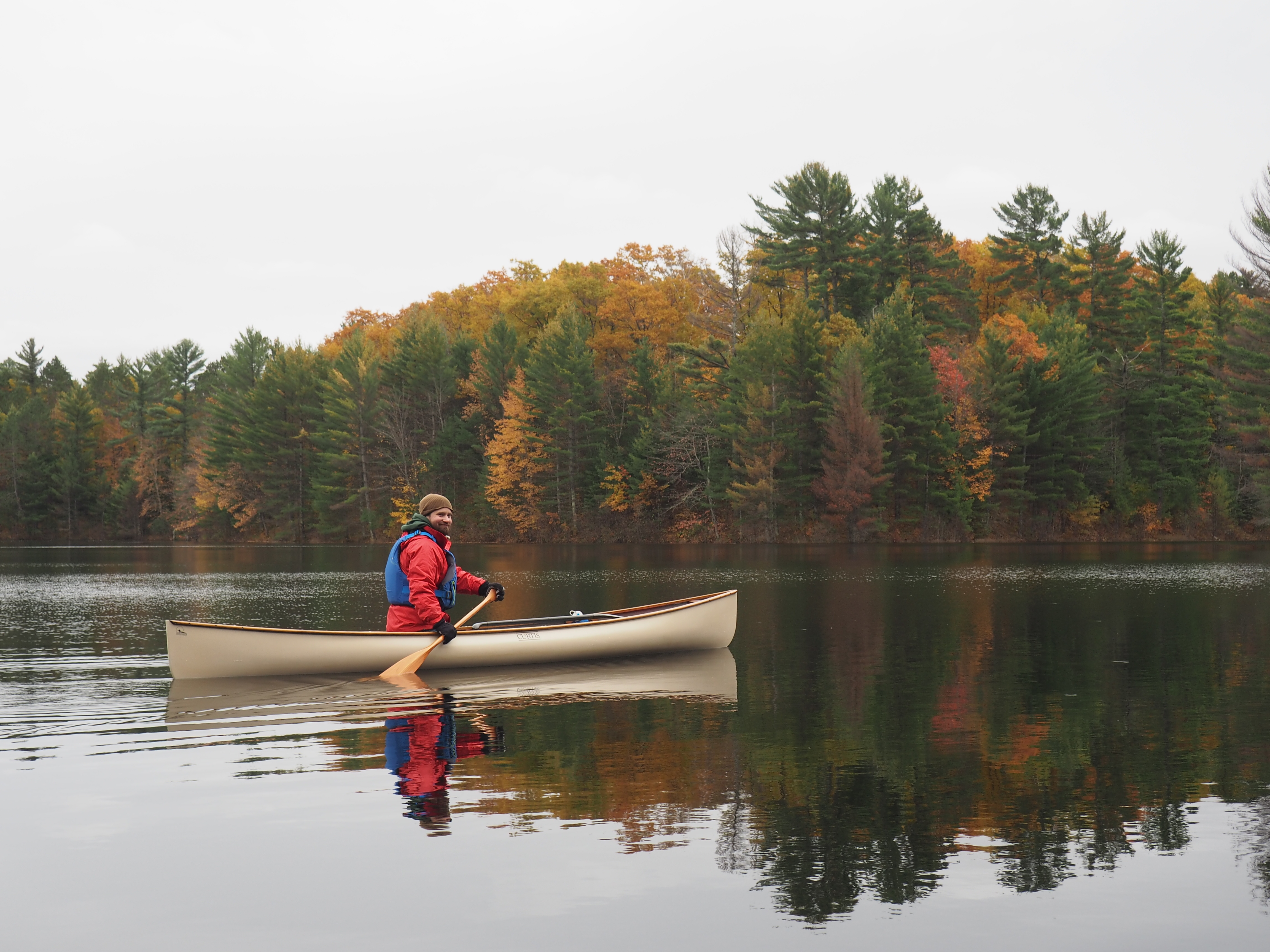
Number Seven: Lotus Egret
This one was a barn find and she is in fine condition, after I gave her a good scrubbing and oiled and sanded the gunwales several times. The Egret came from the lofting board of Mike Galt, the late iconic canoe designer and builder. His canoes are all elegant and well-crafted, and my guess is he lost $100 on every boat he built and tried to make it up in volume. He was relentless in his quest for quality.
He was also a controversial character. In the 1980s and 90s, canoe designers were a quirky bunch, and often fought hammer and tongs about what constituted the proper ways to design, paddle, and build canoes. A few managed to stay above the fray, but it got personal. Mike often had a younger female on his arm and a cigarette barely hanging from his lips. A charismatic character he was for sure.
Anyway…the Egret was specifically designed for freestyle canoeing, an activity where paddlers choreograph paddle strokes to music, and sometimes to comedic effect, costumes. I take nothing from the skills of many of these paddlers, but I know few people who take freestyle seriously. A handful of paddlers participate in the national competitions.
As a reult, the Egret paddles beautifully, especially with two people who know what they’re doing. I love paddling her with my wife. She’s not fast but she’s fun. Sort of a Miata of canoes.
Number Eight: Swift Dragonfly
There aren’t many canoes that I’d consider buying a second one just in case the first one wears out. This is one of them.
The Dragonfly has a long and sorta weird history, with some differing opinions of who designed it, who influenced the design. whose idea it was, and all that stuff I try to ignore. It was cetainly influenced by David Yost, a prolific and talented man who has never designed a boat I didn’t enjoy paddling. Some say Harold Deal designed it, but I don’t really know who to trust on the story. My guess is Harold designed it, and then Dave perfected it.
Anyway…it’s a fantastic boat, the fastest 14.5 footer I have ever paddled. It’s also one of the most maneuverable solos I have ever paddled (outside true whitewater boats, naturally). She has less initial stability than many due to her arched, rounded bottom, and she’s lively when getting in and out on a muddy river bank. Between the Phoenix and the Dragonfly, I use the Phoenix more when the water’s cold as she’s more predictable.
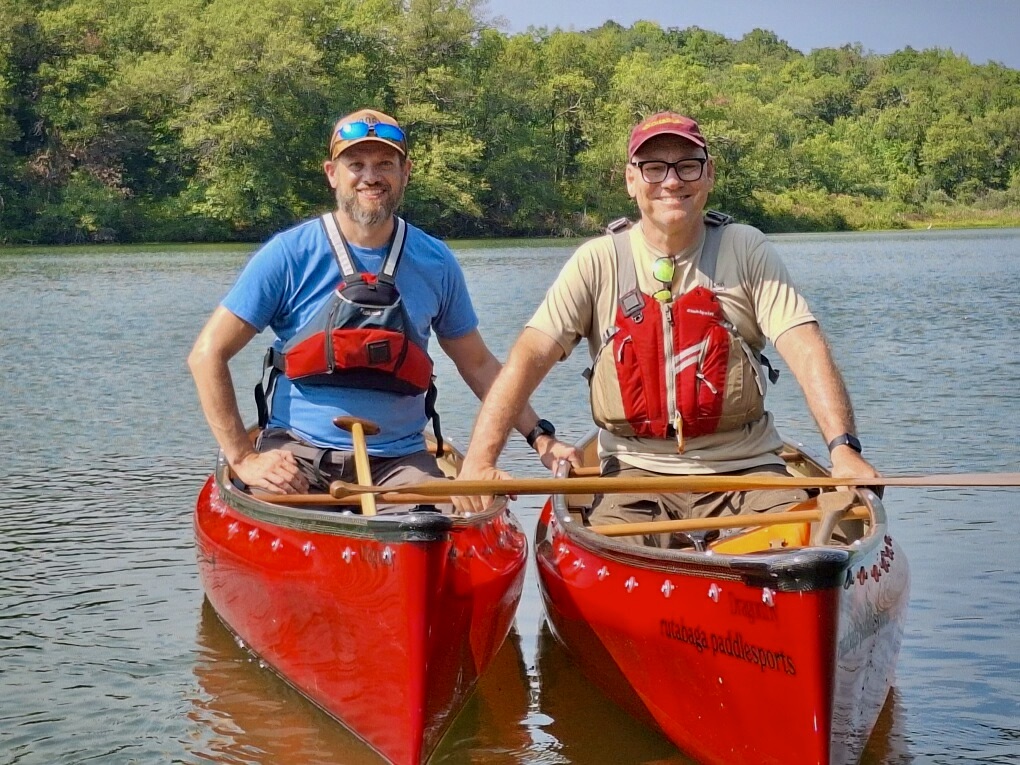
Number Nine: Blackhawk Covenant
This canoe is quirky, like her designer, Pat Moore. Pat was one of the designers I spoke of earlier, one of the ones that weighed in about the true nature of good paddlers and good boats. He was dogmatic and unwavering in his opinions, achieving a zealotry that few matched. I say he was, although I think he may be still alive. He disappeared years ago into the wilds of central Florida.
The Covenant uses a pedestal rather than a seat, which gives you a lot more feedback from the hull than a seat. That’s important, as the Covenant is barely 24 inches wide. She has spit a lot of my friends into the drink after taking a careless stroke. She is probably the most efficient canoe I have ever paddled as far as effort at a cruising speed. The downside is that while comfortable, the pedestal gives you exactly one seating position. I took her on a long paddle down the Wisconsin River, and my ankles too a week to recover.
I am considering selling her, as she rarely gets wet, and that’s a shame. The problem is that there aren’t that many paddlers who can handle her. Not bragging, just saying.
Number Ten: Nova Craft Prospector 16 (Royalex)
This old standby is the Ford F-250 of the canoe world. She’s not particularly fast, but she’s deep and dry, can hold over a thousand pounds, and can take a beating. I’ve paddled her up to just shy of Class III rapids and she handles it just fine.
Royalex is now gone, replaced by T-Formex from Esquif, so mine is from the days when Spartec made Royalex. It’s a horrible material to make as far as the environment goes: it offgases something awful, and the site where they made it in Warsaw, Indiana turned into a superfund site after they closed down production. T-Formex is a lot better environmentally, but boat with the least environmental impact is the one you don’t have to replace.
She lives in a friend’s garage up by the Kickapoo River. I can get it whenever I want, but my friends have two young kids whom I love dearly (I love the parents too), so they have a canoe when they need it.
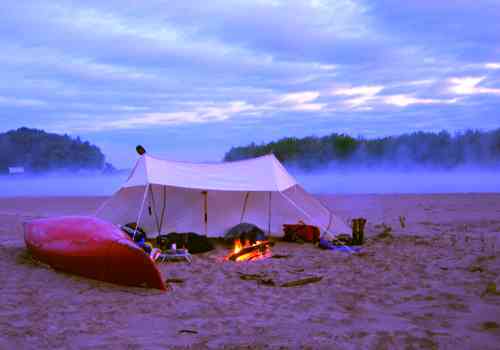
Number Eleven: Nova Craft Pal
If you can only own one boat, she would be a good choice. She’s sort of the Ford F-150 of the canoe world, with less rocker and depth than the Prospector. Flip her around and she’s a fine solo if you paddle Canadian style. She can be paddled backwards with a young child in the stern-now-bow seat and the boat trims out beautifully.
My Pal is Royalex with ash gunwales, so she’s pretty too. And it was the boat I used to train Lucy.
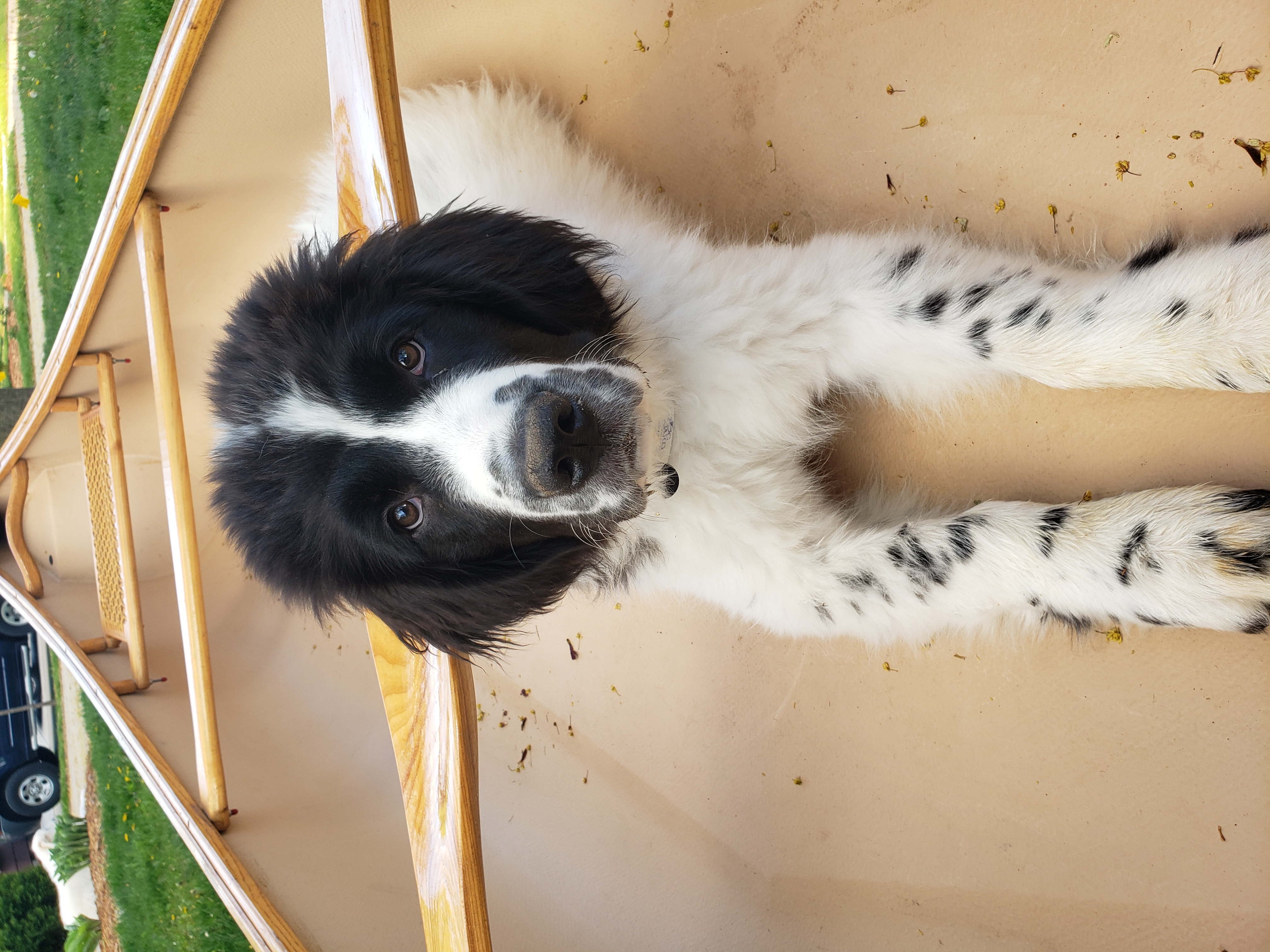
Number Twelve: Chestnut Ogilvy 22″
She’s a beast. Seats six with a load. I should probably sell her, I dunno. 160 pounds dry, and my guess is that she’d hold a few tons of dead moose. The Mack Truck of canoes.
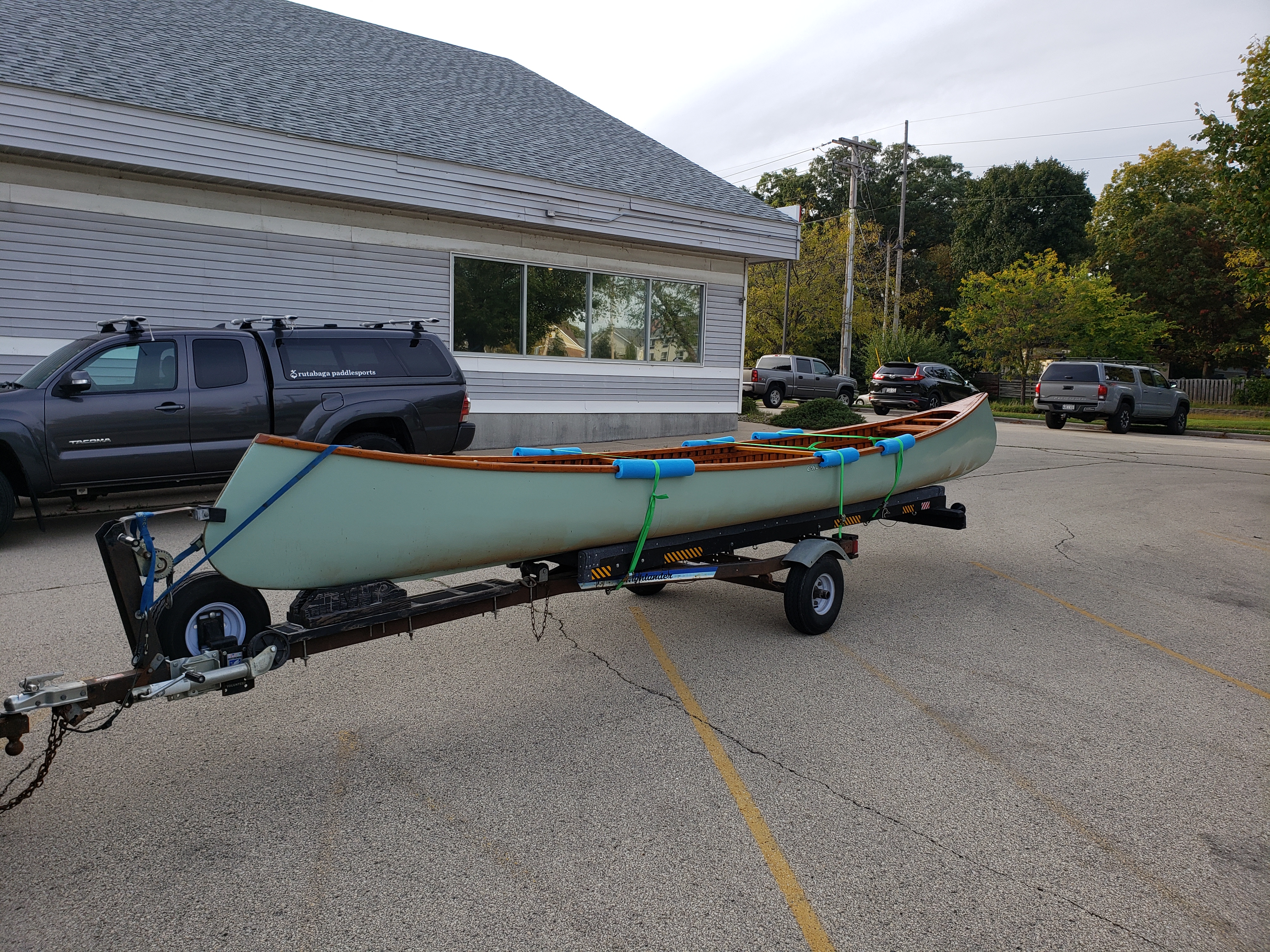
Number Thirteen: The York Birchbark 16 footer.
She’s a beaut, ain’t she?
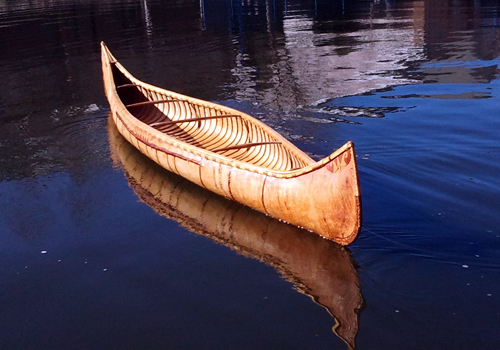
Number Fourteen: Northstar Pearl, K9 version..
That’s a whole other post.
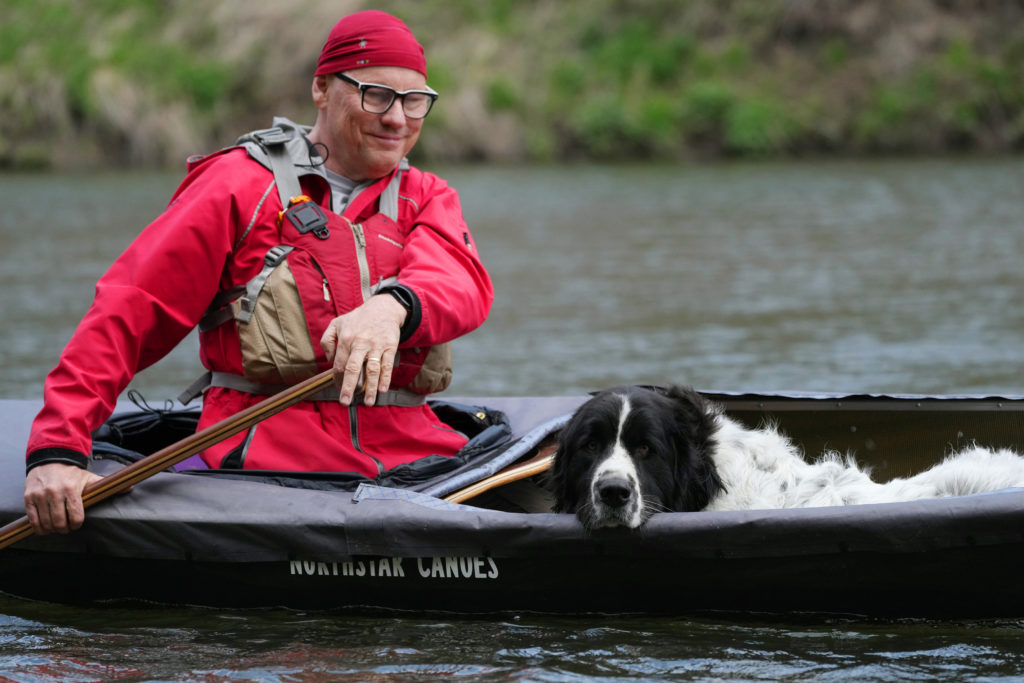
Of course, this doesn’t include my kids’ boats, a few vintage boats that are more fixtures than anything, or sea kayaks (a handful of them). So I guess we’re at lucky fourteen. Call it an occupational hazard.
Respectfully submitted,
Canoelover
